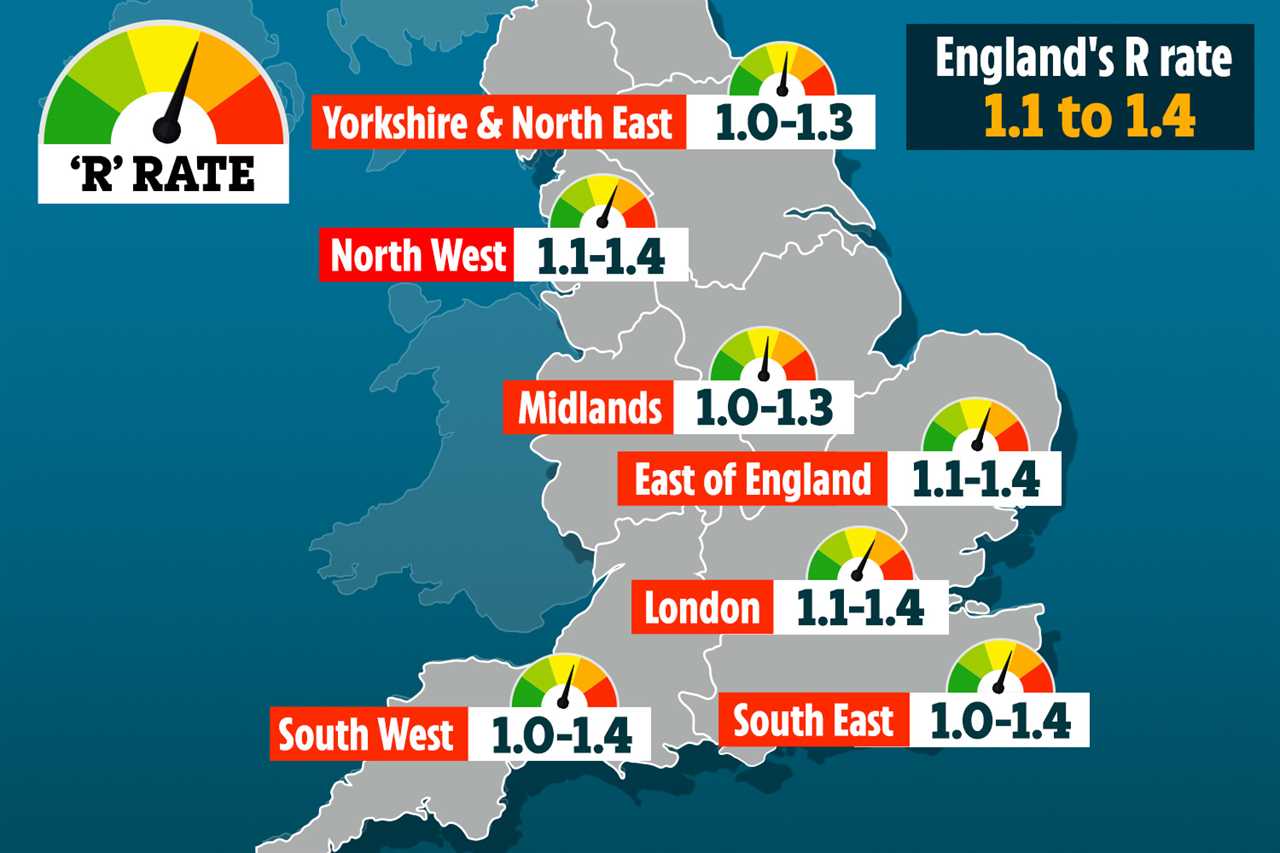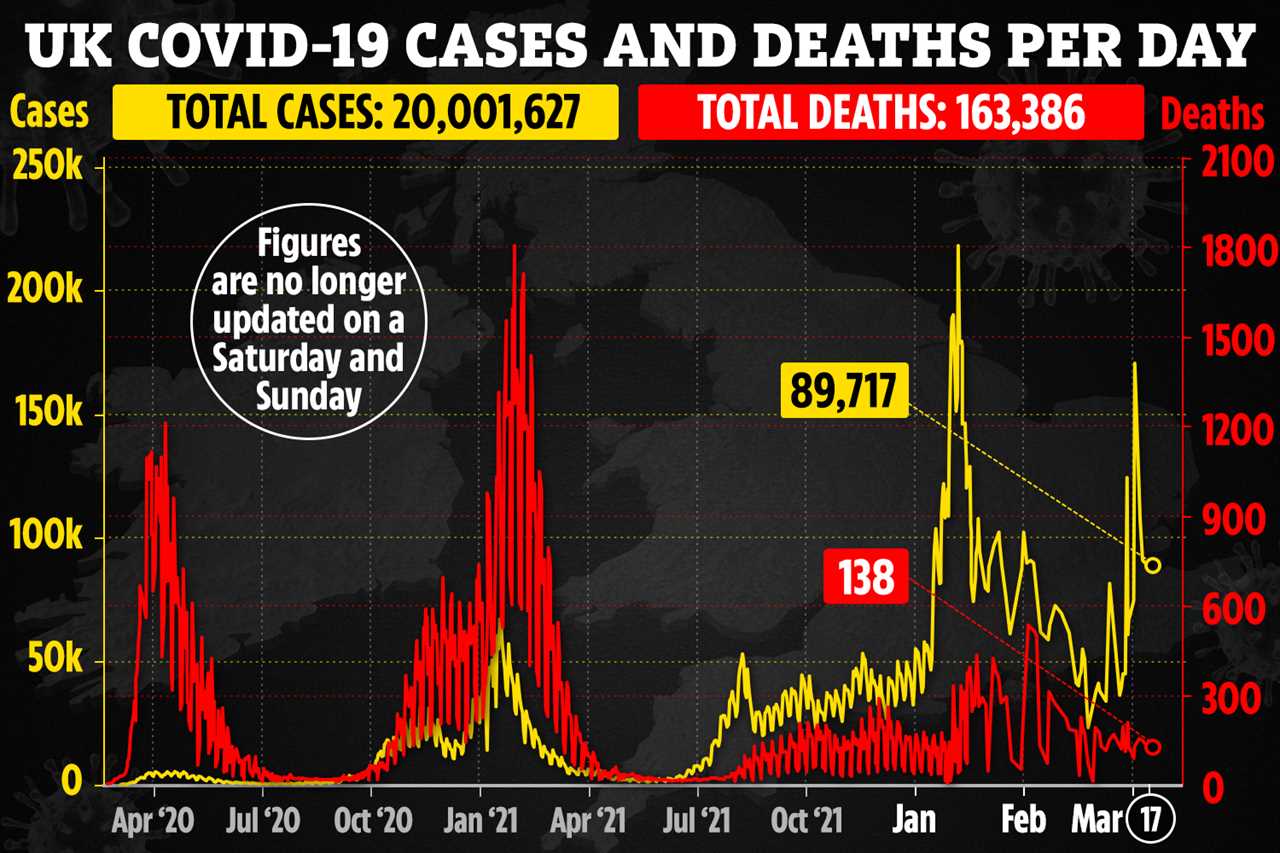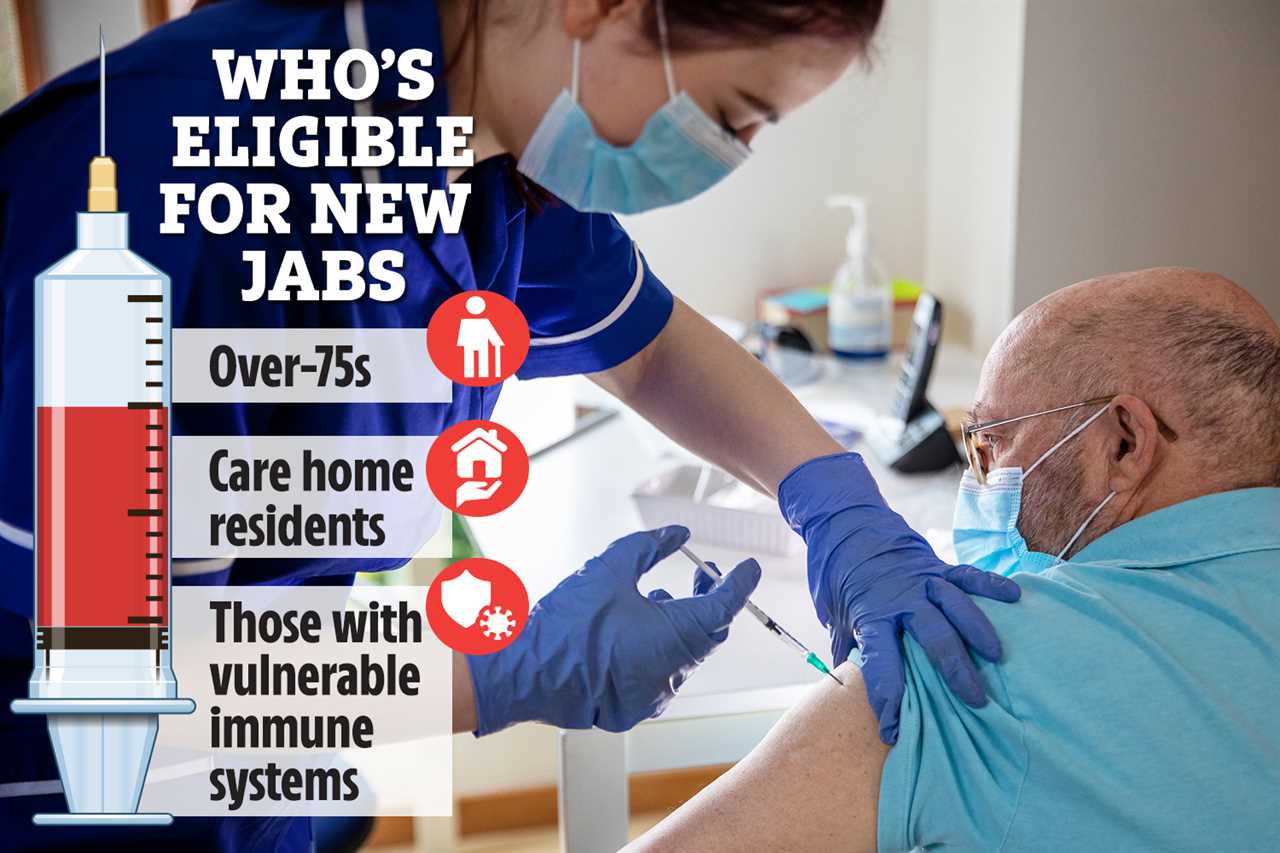THE UK’S official coronavirus R-rate could be as high as 1.4 for the first time since January, new government data has revealed.
It’s currently sat between 1.1 and 1.4, which is up from 0.8 – 1.1 last week.

An R value between 1.1 and 1.4 means that, on average, every 10 people infected will go on to infect between 11 and 14 other people.
The R rate hasn’t been this high since January, when it sat between 1.1 and 1.5.
The growth rate has also climbed, and is now between 2 per cent and 6 per cent, meaning that the number of new infections could be growing by up to six per cent each day.
The update from the UK Health Security Agency (UKHSA) comes as one in 20 people in England are now infected with the bug.
Read more on Covid-19
Data from the Office for National Statistics (ONS) showed that across the UK, 3.3 million people were estimated to have the bug.
While this is an increase from 2.6 million across the UK in the previous week, it’s still below levels seen at the start of the year, when 4.3 million people had the bug.
Getting vaccinated is still the best way to protect yourself against infection.
Various studies have shown that Omicron is a milder variant than those that have come before it, such as Delta and Alpha.
However, a fourth vaccine dose is soon being rolled out to the vulnerable due to fears that immunity is now waning.
Yesterday a further 89,717 infections were reported in the UK, which was lower than other rates reported this week.
Despite the uptick in cases, deaths have continued on a steady trajectory, with a further 138 having been recorded yesterday.
The Midlands and the North East and Yorkshire are the regions with the lowest R rate, both at 1.1-1.3.
They are followed by the South East and the South West which are both sat between 1-1.4.
The highest R rates are seen in London, the East of England and the North West, all between 1.1-1.4.
In the week ending March 12, 2.7 million people had the bug, data from the Office for National Statistics (ONS) showed.
The Omicron BA2 variant is now dominant across the UK and experts today said that infections are increasing in every area and across every age group.
Prof James Naismith, Director of the Rosalind Franklin Institute, and Professor of Structural Biology, University of Oxford said: “Without vaccines, this would be bleak for the this country. Countries with poor vaccination rates face a very challenging future.
“At this level of prevalence and the decision not to halt the spread, the most likely outcome is that almost everyone who is susceptible is going to be infected.
“For the UK, my main concern is for the vulnerable for whom this disease is serious and for those whose lives will be blighted by long covid19.
“Every effort must be made to triple vaccinate as many people as possible, quadruple vaccinate the most vulnerable and make available antivirals.”








